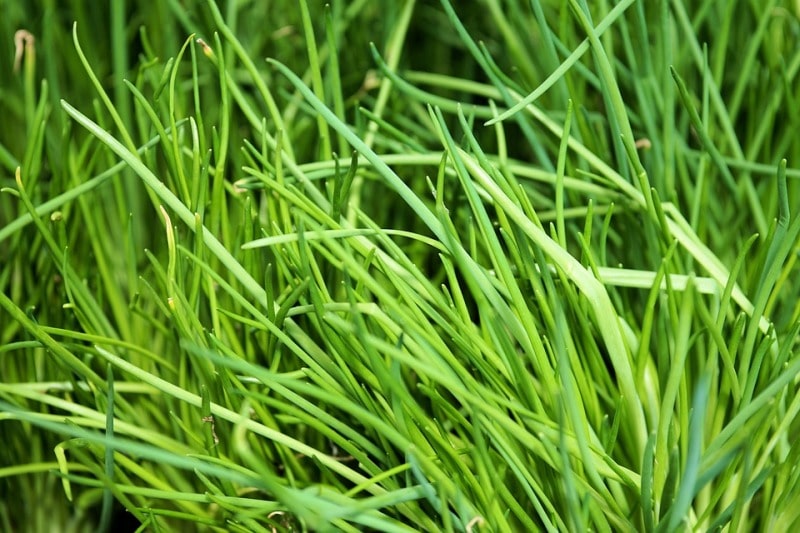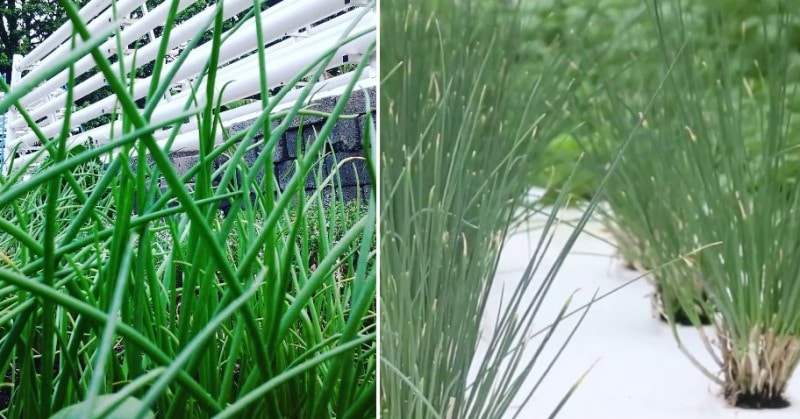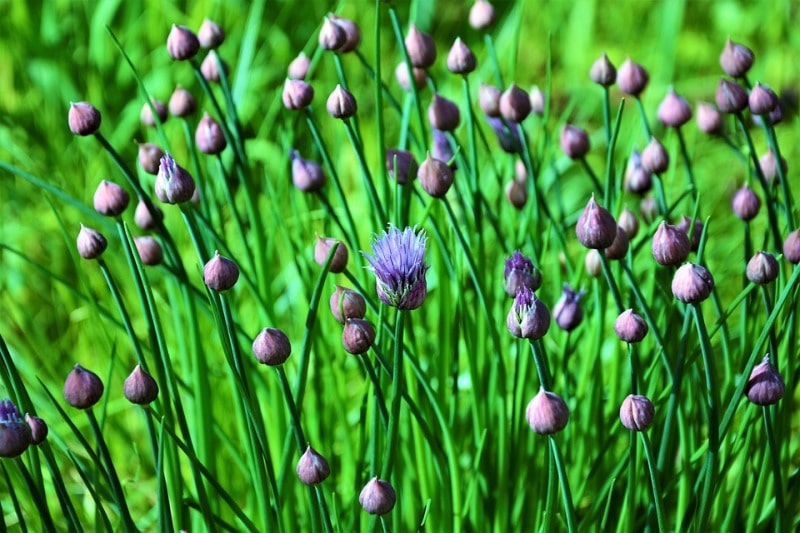A step by step guide for growing Hydroponic chives
Chives are one of the most popular herb plants successfully grown in hydroponic systems. The small size and perennial growth habit of chive plants, means they take up little growth space and can offer a continual supply of fresh leaves for cutting in both indoor and outdoor hydroponic systems. Chives plants flourish under hydroponics cultivation and can endure a wide range of growing conditions, performing well in indoor setups and windowsill planters as well as in commercial greenhouse systems for farming chives. Chives are an incredibly multitalented herb with a mild to strong onion flavor, depending on the growing conditions and variety. The great flavour, collective with the effortlessness with which chives propagate and prosper, make them an admired ingredient and a great crop for hydroponic growers as growing chives in a hydroponics system are effortless and rewarding both.
Chives and garlic chives are both members of the onion or Allium family which also includes garlic. Garlic chives (Allium tuberosum), also recognized as Chinese chives. Chives have been grown in herb gardens for long back. Being a resourceful crop both the leaf and flower of the chive plant is edible, with the chive flowers also being cropped for both dried and fresh use. Hydroponic producers can fill the market for fresh chives even out of season and can also provide grocery stores, restaurants and caters with a higher quality packaged product on a year-round basis if one wants to indulge in growing chives for profit.

The most common and best chives to grow are yes you guessed it right it is common chives. A few other varieties, like garlic chives and Chinese chives, are also available and used for a hydroponic system.
Chives Propagation:
Chives propagate quickly from roots and can also be planted by division. For further propagation, chives can be propagated from a previously established clump[s]. A large chive clump produces multiple smaller plants consisting of 3 -6 bulbs each. Chives grown in soil can also be used, divided and transplanted into your hydroponic setup.
You may also like Growing Thyme Herb in the Home Garden.
How to grow chives from seed
Chive seed germinates easily and rapidly, usually within eight to ten days, but an invariable moisture level should be maintained and a growing media with a good water holding capacity is recommended. Optimal temperatures for germinating chives seeds are between 16° – 22° C, with germination being most speedy at 21°C. After four to six weeks the young plants, often grown in cells, Rockwool cubes can be transplanted into the hydroponic system. Chives can also be directly seeded into hydroponics media beds in hydroponic setup; one has to keep patience as there will be a considerable time lapse between sowing and the first harvest of its foliage. Few leaves will be able to be harvested in the first few months as the plants must build up as reserves in the root system to sustain future cuttings. Another method of planting but time-consuming method of propagation chives are from established clumps. A larger clump produces many smaller plants each one consisting of about five bulbs each. In hydroponics and in NFT systems, in particular, large clumps have to be divided and cut back every few months to maintain a check on root development and prevent nutrient accumulation.
Even though they only take 4 -6 weeks to mature, it is desirable that you not harvest any leaves for the first 1.5 – 2 months, even though the plant may appear mature. They should be about 6 inches or taller. The plant needs to put together its root systems to support future harvests. Chives can be prolific for several years even with recurring harvests, but they have to establish themselves first.
Hydroponic systems for growing chives herb
Chives can be grown hydroponically using a number of hydroponic setups. Vertical towers are common and works well, it is good to start from divisions in towers, seeds will also work although not as easy and it is time taking so it is advisable to use clumps of chives that have already been established, even if in soil you can use them for your hydroponic system only after washing off any soil particle.

Other hydroponic systems that have been successfully used to grow chives are:
Floating Raft Systems this method is often preferred by experienced growers as this method allows planting modest amounts of chives in combination with other hydroponic crops. Ebb and flow or drip systems also work well for growing chives.
You may also like Growing Rosemary from Cuttings.
Growing conditions of the chive plant
Chives grow year-round in the hydroponic system, provided they receive a sufficiently long day length sunlight exposure or grow lights. In areas with low winter light availability, supplementary lighting may be provided to prevent dormancy and maintain good rates of Chives yield per plant. Dormancy in chives is induced, even in high temperatures, by days less than 14 hours long light (the critical day length) and with a critical minimum light intensity of about 50 lux. By extending the day length by providing artificial lighting you can prevent chive plants from going away into dormancy. Plants growing under artificial lighting can be kept constantly growing and producing new foliage for good months, as long as the light period is at least 14 hours in length.
In due course, the plants, after many harvests, can become less productive, so replacing plants every two years with new seedlings or divisions is a sensible idea.
Ideal growing conditions for chives:
- pH: 6.1–6.8
- EC: 1.8–2.2
- Temperature: 65–80ºF
Chives are a tough crop that can continue to exist in a wide range of temperatures and can even live without water for a while without its impacting quality. Chives are also quite pest-resistant, rarely infected with diseases and are rarely under attack by insect pests.
Nutrient solutions for chives in hydroponics are similar to those recommended for Hydroponic cilantro and Hydroponic parsley, requiring a good amount of sulfur for the production of essential oils and aromatics in the foliage. Care must also be taken with the right balance of nitrogen so that lush, excessively weak growth does not develop at the cost of foliage quality and shelf life. A Nitrogen and calcium deficiency is usually characterized by reduced growth, reduced leaf quality and it also speeds up senescence of the older leave and harvested product.
Harvesting procedure of Hydroponic chives:
The first foliage cut or harvesting should not be done until the plants have attained at least 15 cm of height, and only a limited amount must be taken initially at the first harvest. It is fundamental that sharp scissors or knives should be used when harvesting chives as this confines the amount of cell damage caused during this process. Restricting the amount of cell damage due to cutting will help to prevent browning and dieback of cut foliage which chives are predominantly prone to.
You may also like Growing Hyssop, Planting, Care, Harvesting.

The leaves should be cut 5 cm above the base of the plant, leaving adequate foliage to help the plant to regenerate and carry out photosynthesis. All of the leaves should not be cut at the same time, at a time 1/3 to 2/3 of the plant can be cut, leaving some foliage for the next harvest.
Pests and diseases of Hydroponic chives:
Thrips are a major problem on both species of chives in outdoor hydroponics system excellent sanitation must be ensured to manage these insects. Use of recommended oil sprays and botanical/organic insecticides may provide some degree of control if applied correctly using spraying technology such as foggers, misters or electrostatic sprayers. Aphids are also a widespread problem with chives. Wherever chive clumps become dense and tangled, fungal diseases can take place. Selective foliage removal or thinning helps to assist airflow through plantings of chives.
That’s all folks about hydroponic chives farming and growing methods. Keep growing herbs in hydroponics!.
You may be interested in Cherry Tomato Farming In India.